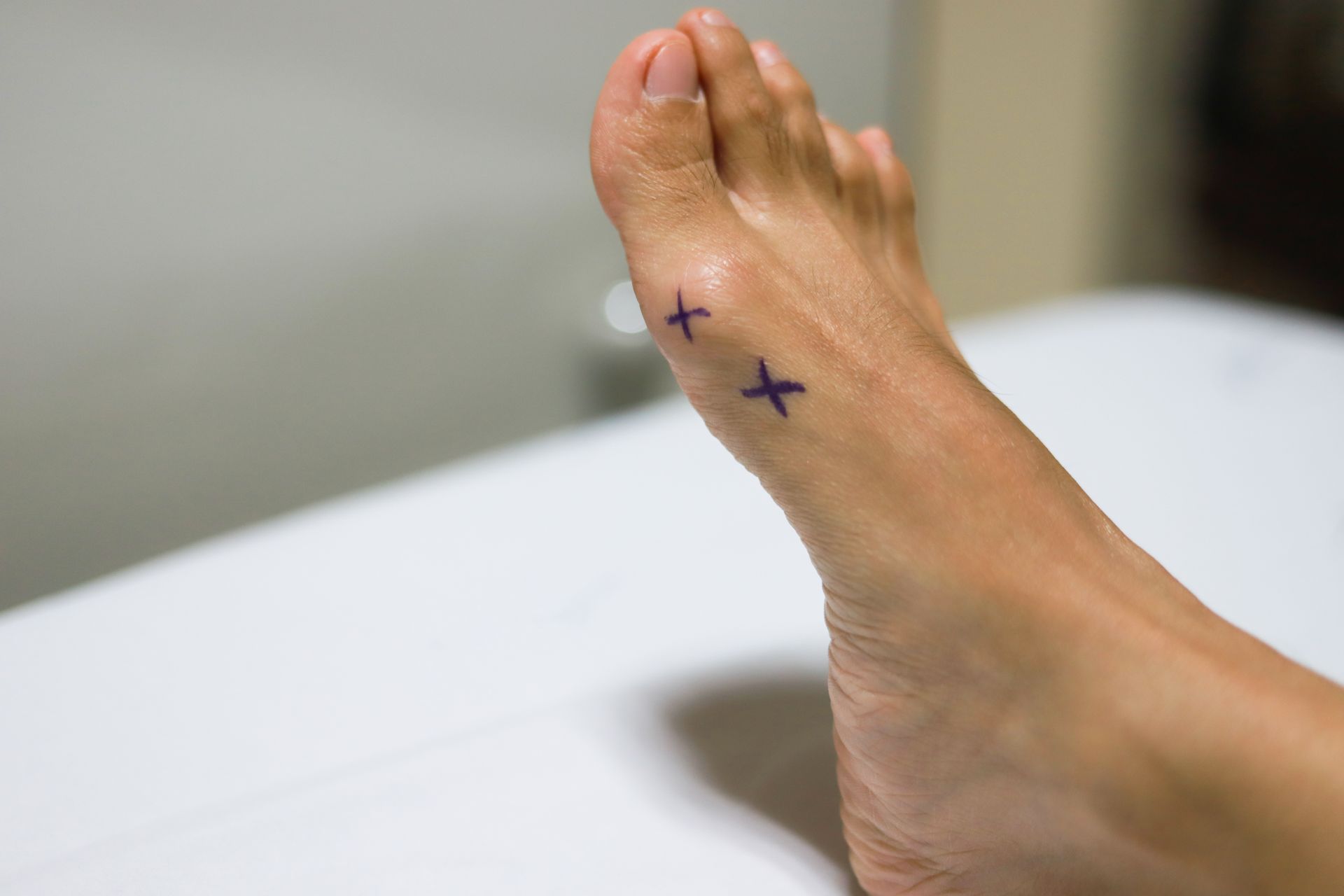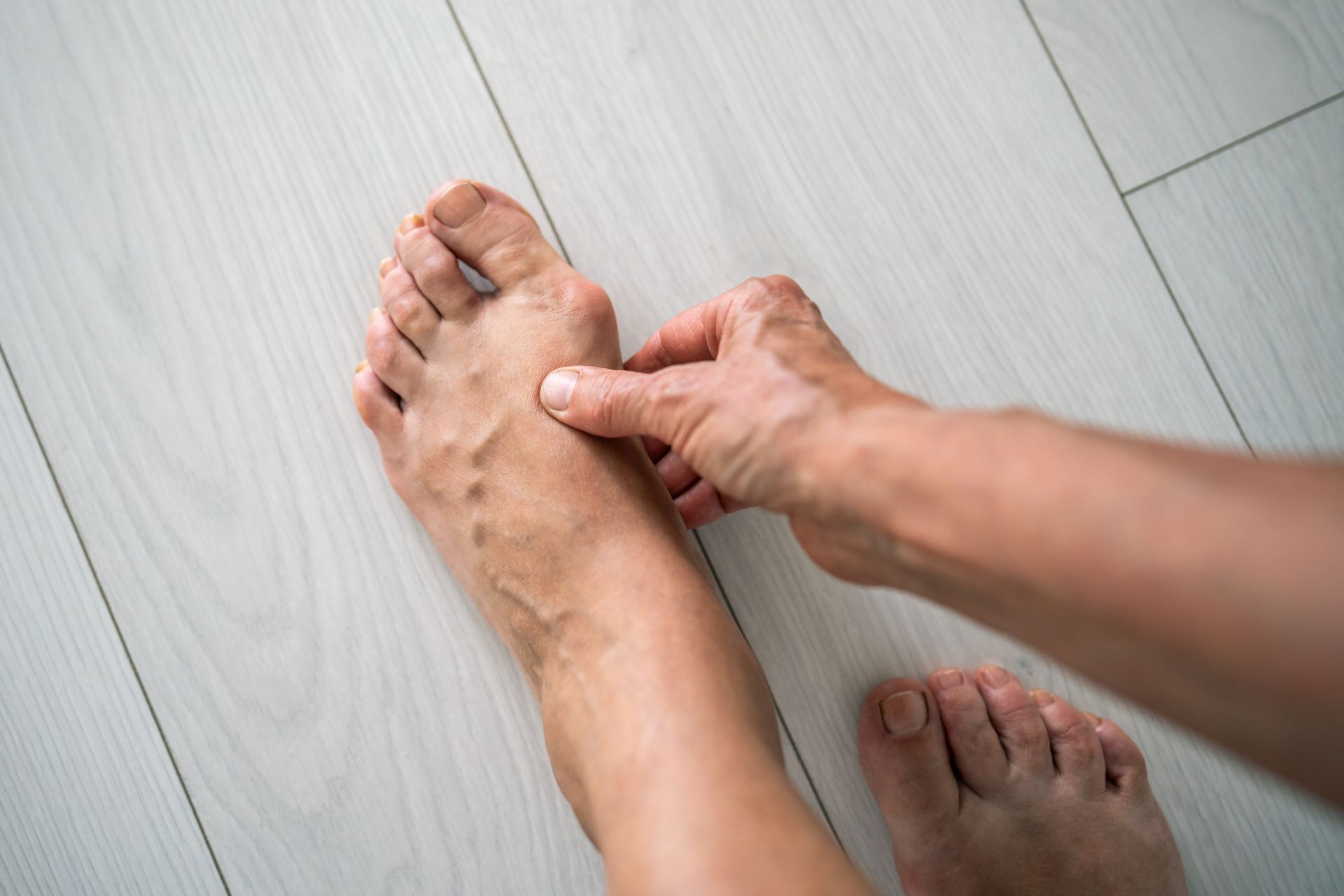Non-Surgical Treatment of Morton's Neuroma
There are many potential causes for pain on the ball of the foot (or forefoot), with Morton’s Neuroma being one of the most common. A Morton’s Neuroma is an inflamed or swollen nerve in the foot and is typically located between the third and fourth toes. Activities and shoes that place extra pressure on the forefoot can be the cause of a Morton’s Neuroma. Symptoms of a neuroma include burning, tingling, numbness and pain on the bottom of the foot or between one or more toes. Patients frequently complain of a “bunched sock” sensation or the feeling walking on a rock. Non-surgical treatments are usually effective with Morton’sNeuromas.
Non-Surgical Remedies for Morton's Neuroma
- Shoe Changes- Avoiding high-heeled shoes (greater than 2 inches)will help lessen the pressure on a Morton’s Neuroma. Also, some sport-specific shoes like cleats and certain running shoes are too tapered or have too narrow of a toe box for some foot types.
- Immobilization- In some cases, a Morton’s Neuroma can be caused or worsened by a sudden increase in physical activity. In these instances, 2 to 3weeks of rest and immobilization in a walking boot can allow the acute inflammation to quiet down and sometimes resolve. Immobilization alone is not typically effective for chronic cases.
- Physical Therapy- This is not a mainstay of treatment for neuromas, but there are circumstances where PT can be effective. Tight calf and hamstring muscles place added pressure on the ball of the foot creating a muscle alignment known as equines. This alignment can exacerbate the symptoms of aMorton’s Neuroma. Skilled physical therapists can help reduce pressure on the ball of the foot by developing stretch and laxity in the calf and hamstring muscles.
- Padding- There are a variety of prefabricated pads, cushions and inserts designed to alleviate the painful symptoms of a Morton’s Neuroma. The easiest to use is a small adhesive cushion called a metatarsal pad. This pad isa soft cushion with a triangular, teardrop shape. When effective, the metatarsal pad shifts weight in front of the neuroma, allowing it to heal.Full-length metatarsal pads are also available, usually at running specialty stores. If patients cannot find a comfortable over the counter insert, a custom insert called an orthotic can be made.
- Injections- Cortisone is basically an anti-inflammatory. When infiltrated in the area of the neuroma, it can reduce the swelling in the nerve and help it to heal. Other types of injections also exist: a dilute alcohol solution is sometimes used to chemically deaden the nerve, and Vitamin B12 has also been used.
Pain on the ball of the foot is very common and Morton’sNeuroma is one of the most common culprits. Many patients obtain relief with one of these non-surgical treatments. Additionally, the help of a
skilled podiatrist
can improve the symptoms associated with neuromas.
Contact ourBaton Rouge podiatry clinic
to
schedule a consultation
if you are suffering from a painful neuroma.


